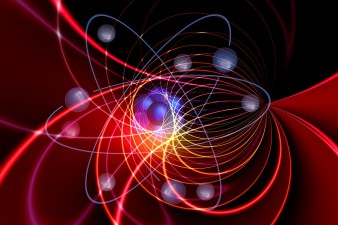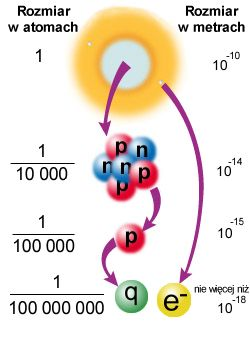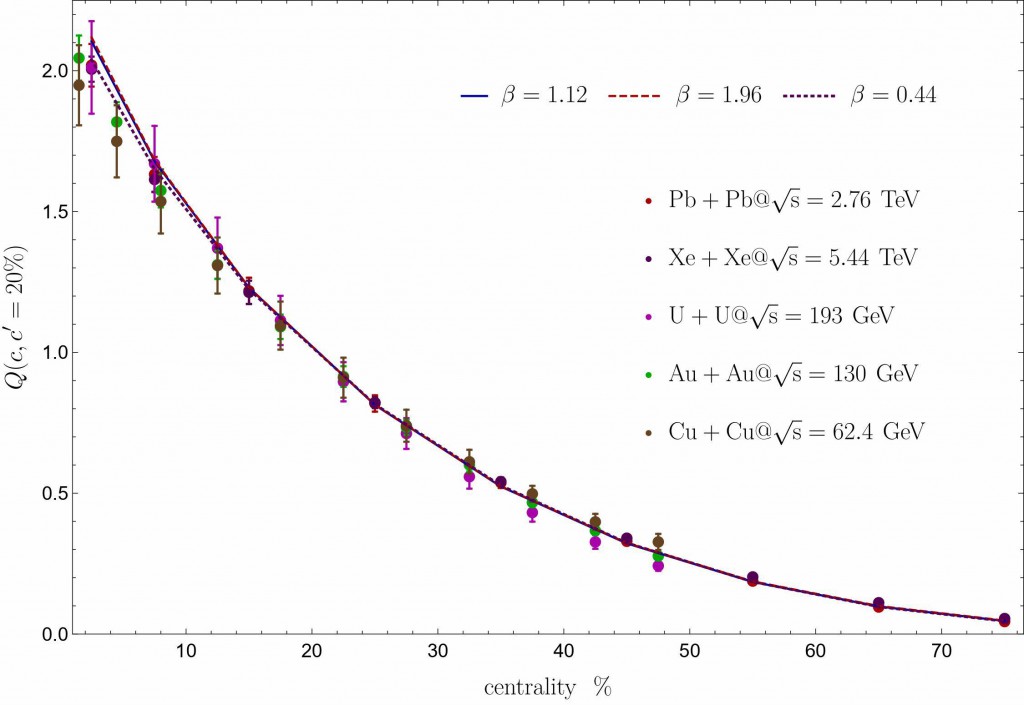
Study on quark-gluon plasma
Ancient Greeks had already been wondering what the matter that fills the Universe is composed of, making a bold hypothesis about the smallest, indivisible bricks called atoms (in Greek ἄτομος – átomos, where α-”un-” + τέμνω – temno, „cut”). Currently, after over twenty centuries of intensive research we have discovered that the matter that surrounds us is composed mainly (though not only) of quarks and electrons, basic and indivisible bricks called elementary particles the size a hundred thousand times smaller than the size of an atom! Natural phenomena occurring at such small distances are studied with remarkably big particle colliders (e.g. LHC, Genewa), whose sizes reach tens of kilometres. Thorough observations and theoretical studies indicate that quarks possess remarkable physical properties: they never occur alone, but always in pairs of quark-antiquark, or in threes, compounding into particles such as a proton or neutron.
In the 1980s physicists had a splendid idea to, by colliding cores of heavy elements, such as gold or lead, with each other, create for a split second a dense matter in which quarks, compounding into protons and neutrons from both atomic cores, would together create one drop of collective state of matter. Fascinating studies of the so-obtained quantum substance called quark-gluon plasma have been going on ever since. The behaviour of this mysterious plasma resembles a very low viscosity liquid (perfect liquid), but theoretical understanding of this fact is unclear.

In the paper titled Constraining the initial stages of ultrarelativistic nuclear collisions published in the journal Phys. Rev. D 104, 074012, Jakub Jankowski, Syo Kamata, Mauricio Martinez, and Michał Spaliński considered the general class of models describing the behaviour of quark-gluon plasma, comparing their predictions with observations. In particular, an important value measured experimentally is the number of charged particles (such as protons, pions and their cousins) produced in the collision as a function of the centrality of the collision. The latter concept, although mysterious, is intuitive: central collision (conventionally 0% centrality) is one in which the cores collide “head-on,” just like in a tragic car accident. Peripheral collision (conventionally about 100% centrality) is one where the atomic cores will lightly catch on each other, like in a harmless urban bump. It is clear that for a low centrality (head-on crash) the number of produced charged particles will be large, while for a harmless bump it will be small. It turns out that the measurement data collected for five various collided cores at five various collision energies demonstrate an unexpected universal behaviour of the number of charged particles produced as a function of centrality! As the authors write: the theoretical models considered in our work have only one parameter, called β, that characterises our system. For example, particles diverging freely, i.e. without interactions, have β=1. In Fig 2, along the experimental data, theoretical predictions for different variants of the initial conditions of the collision are presented. These studies provide the possibility of insight into physical and unanticipated properties of plasma composed of the smallest known particles, the same as the one that existed in the very beginning of the Universe’s life.

Added by: Joanna Molenda-Żakowicz
Dean’s representative for promotion and media relations
